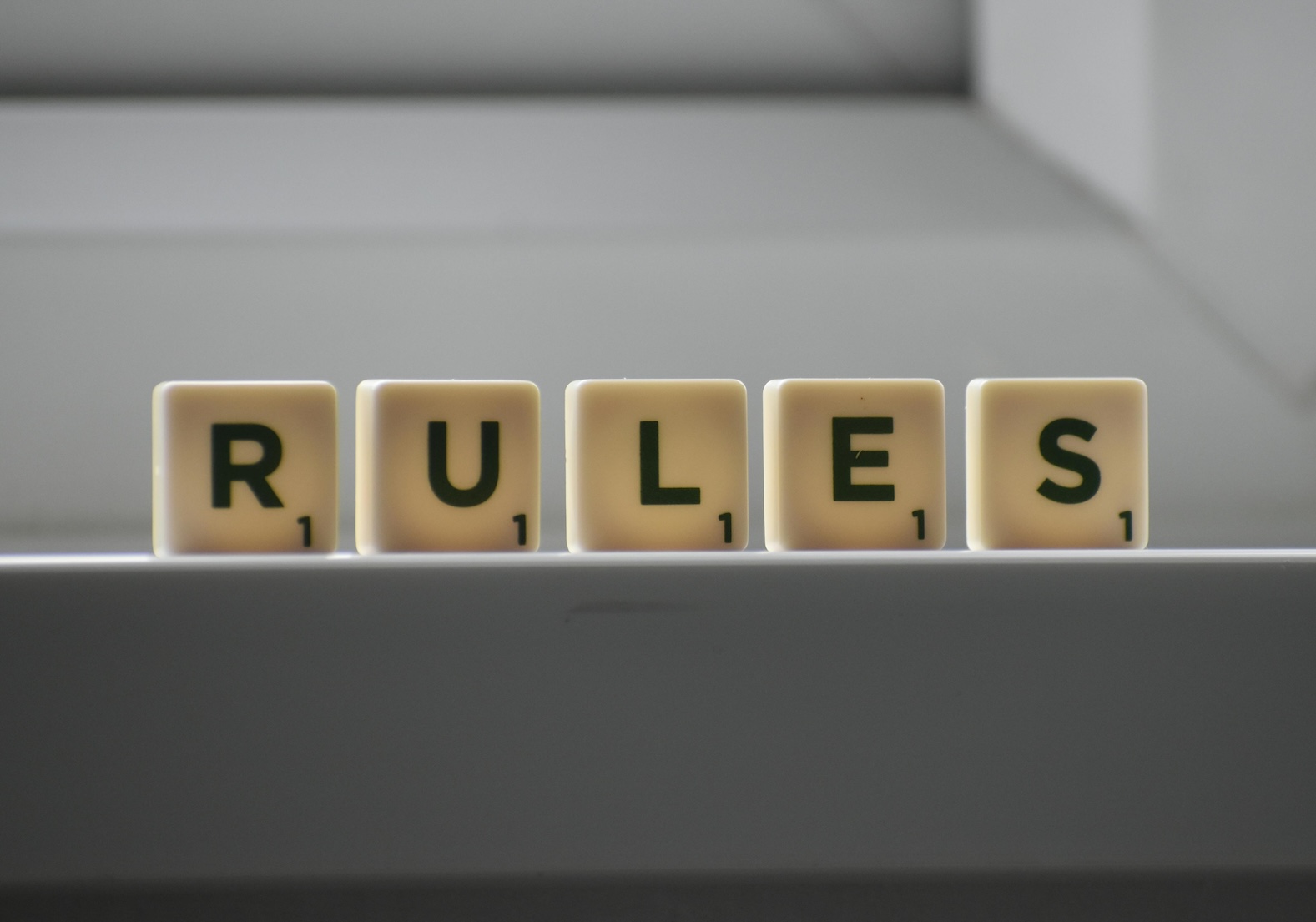How to Use the 80/20 Rule in Relationships
The 80/20 rule, also known as the Pareto Principle, is a powerful concept that applies to many aspects of our lives. It dictates that 80% of the outcomes come from 20% of the inputs. This principle was named after the Italian economist Vilfredo Pareto, who observed this pattern in wealth distribution in his country, i.e., 80% of the wealth belonged to 20% of the population. While it is primarily used in business and economics, you can also use the 80/20 rule in relationships.

The 80/20 rule, also known as the Pareto Principle, is a powerful concept that applies to many aspects of our lives. It dictates that 80% of the outcomes come from 20% of the inputs. This principle was named after the Italian economist Vilfredo Pareto, who observed this pattern in wealth distribution in his country, i.e., 80% of the wealth belonged to 20% of the population. While it is primarily used in business and economics, you can also use the 80/20 rule in relationships.
The Pareto Principle can help you understand how to invest in a relationship in order to ensure both you and your partner are getting your needs met. Essentially, it gives us a framework for both understanding and positive change.
The overall goal of the Pareto Principle is to extract the most value with the least effort. Now, this isn’t an excuse to become lazy or neglectful in relationships, but it can be a useful tool in helping both partners feel valued.
3 ways to use the 80/20 rule in relationships
So how can you use the 80/20 rule in relationships? Here are three ways you can use it with your partner.
1. Love languages.
The first tip we have for using the 80/20 rule in relationships is to focus on the 20% of actions that make your partner feel most loved. To help with this, you can use the love languages framework to identify your partner’s love language and focus on expressing it more frequently, and they can do the same for you.
A friend of mine who had been with his partner for nearly a decade said to me recently that he didn’t realize that his partner’s love language was quality time. His love language is acts of service, and for years, he had been getting back after a long day at work and helping out with household chores.
For him, this was a way to show his partner that he cared. But it didn’t make her feel valued. After taking the time to identify her love language, he started spending more quality time with her instead of doing the chores when he got home, and it made all the difference. He felt like he could have avoided ‘wasting’ time in the past if he had known.
This is a perfect example of the 80/20 rule in relationships. Now, he focuses on the 20% of actions that make his partner feel most loved, and their relationship is far better for it.
The way to include the 80/20 rule in terms of love languages is to first identify both of your love languages. The love languages framework states that there are five key love languages: quality time, acts of service, physical touch, words of affirmation, and gifts.
Sit down together and discuss what it is each other does that makes you feel most valued. Then, focus on doing more of that instead of showing affection for your partner in a way that has little impact on them. Once you identify which language, or languages, resonate most with your partner, you know where to focus your efforts when it comes to showing them you care.
2. Conflict resolution.
If you’re going through a rocky patch in your relationship, you aren’t alone. No relationship is smooth sailing all the time, and it’s important to accept that is normal. However, during these times of conflict, you can apply the 80/20 rule to help get your relationship back on track.
By focusing on the 20% of issues that impact the relationship the most, couples can save time and energy that can be better used in strengthening their connection. Rather than getting bogged down in minor disagreements, it’s often much more effective to focus on the few topics that are causing the most tension.
For instance, if 80% of the issues between two people stem from a recurring misunderstanding or miscommunication, then you can spend time getting to the root cause of why this is the case. Equally, if there is a certain behavior that is a source of contention, it’s worth figuring out why it keeps happening and how to address it. It could even be that 80% of the issues come from external pressure, and if this is the case, it can be a good idea to find ways to reduce this outside stress.
The key is to analyze your arguments and see which ones are most frequent or cause the most distress in the relationship. That way, you can focus on resolving these issues because they likely have the greatest impact on your happiness.
It’s worth noting that conflict is a normal and healthy part of relationships when it’s handled in the right way. Disagreements are natural, but the 80/20 rule in conflicts can help you identify which issues are worth putting more energy into resolving. At the end of the day, you don’t want to spend your life arguing about tiny details that don’t matter.
In fact, when couples handle conflicts efficiently, they create opportunities for emotional connection and vulnerability. Working together as a team to overcome challenges can lead to greater emotional intimacy and a stronger commitment to the relationship.
3. Building intimacy.
The 80/20 rule can also be used to help couples manage their time together. It can be easy to get so caught up in the hustle of everyday life and forget to intentionally set aside time to build your connections with those close to you.
This is where the 80/20 rule comes in. Identify the 20% of activities that make the greatest impact on your bond with your partner and prioritize those. Think about how you spend your time together and how each activity makes you feel.
For example, does snuggling with your partner on the couch make you feel closer to them? Or does going out to dinner make you both feel more relaxed and connected?
It’s important to discuss with your partner what activities make them feel the most connected as well, and then intentionally make time for these activities. For instance, you might schedule a weekly date night or dedicate a day together on the weekend to engage in a shared hobby. This can work wonders for a relationship.
The quality of the time spent together as a couple is incredibly important. Spending three hours deep in conversation on a hike is completely different than spending three hours in silence working in the same room.
By focusing on the 20% of activities that make you both feel closer and more connected. Just to be clear, this doesn’t mean you should only spend 20% of your time together. Every relationship is different, and there are no hard and fast rules that dictate how much time couples should spend together.
Focusing on the 20% of activities that make the biggest impact on your connection is about ensuring you both make time for meaningful activities that bring you closer.
5 tips for using the 80/20 rule in relationships
Now that you know what the 80/20 rule is and how it applies to relationships, here are some tips for making the most of it.
1. Use it as a guideline.
The 80/20 rule is a guideline rather than a strict formula that you must follow to the letter. We don’t expect you to keep a tally of the specific source of every disagreement or to work out the exact amount of time spent engaging in each activity. When used correctly, the 80/20 rule will open your mind to a new way of thinking rather than constrain you to a particular number.
Relationships involve intricate dynamics between two individuals with unique backgrounds, personalities, and experiences. The 80/20 rule simplifies this complexity, and in reality, relationships can require a more nuanced approach.
Emotional connections in relationships are multifaceted and can’t be solely measured or addressed by an exact distribution of effort. On top of that, emotions are fluid and subject to various influences from within and without.
The 80/20 rule helps us to identify which areas of our relationship need the most attention, but it’s up to us to determine how we will use this information in a meaningful way.
Another reason why the 80/20 rule is a useful guideline rather than an absolute law is that relationships often benefit from creativity, spontaneity, and genuine expressions of affection. Rigidly following the 80/20 rule may stifle these spontaneous moments that contribute to a deep emotional connection.
In short, the 80/20 rule should serve as an inspiration rather than a cage. So, don’t stop embracing those special moments that arise naturally in your relationship.
2. Acknowledge that every couple is different.
When it comes to applying the 80/20 rule, every couple is unique. There is no one-size-fits-all approach to relationships. What works for a friend’s relationship may not work for yours, so don’t shy away from listening to your gut and experimenting with different approaches.
Every couple has different values, goals, and priorities, all of which can significantly impact their relationship dynamics. What’s important to one couple might not carry the same weight for another. Tailoring the 80/20 rule to accommodate these variations ensures a more relevant and effective approach.

There’s a lot of talk about authenticity and acceptance in relationships, and it’s true that these are essential for any healthy connection. However, it’s equally important to understand that relationships themselves have their own dynamics.
Recognizing that every couple is different can help you avoid the trap of comparing your relationship to those of others. Would you want your partner to evaluate your relationship based on someone else’s standards? Of course not. It doesn’t make sense.
Dig deep and get in touch with what’s important to you rather than looking to social norms. Comparison can lead to unrealistic expectations that can put unnecessary strain on the partnership.
3. Communicate openly.
Communication is paramount when using the 80/20 rule in relationships. It plays a crucial role in understanding each other’s needs, prioritizing effectively, and fostering a deeper emotional connection.
At its core, the 80/20 rule requires identifying the core 20% of factors that impact a relationship. Effective communication helps partners share their experiences, perspectives, and preferences, allowing them to jointly determine the most critical areas to focus on.
For example, if you use the 80/20 rule in your relationship as described above, you will need to identify each other’s love language. You do this through conversations that aim to find out what makes each other feel loved.
Communication also reduces the likelihood of making assumptions about what matters most to your partner. It can be easy to assume that you know what makes your partner happy and fulfilled, particularly if you’ve been together a long time. But you might find yourself surprised by the answers you get when you engage in an open and honest dialogue.
Effective communication also helps create a supportive and emotionally safe environment in the relationship for you and your partner to share feedback about how the 80/20 rule is working for you. When both partners feel they can open up and share constructive feedback without fear of judgment, it lays the foundation for more open and honest communication in the future.
4. Adapt and evolve.
Be flexible in applying the 80/20 rule to your relationship. As individuals and as a couple, you will grow over the course of your relationship. Priorities, goals, and preferences often shift as you progress through life stages.
Staying flexible allows you to accommodate these changes and continue nurturing your connection effectively. You might find an equilibrium that works for a period of time before needing to adjust it again.
As well as innate changes in individuals, external factors can also come into play. Major life events, such as career changes, moving to a new city, or starting a family, can significantly impact your relationship. During these transitions, the 80/20 rule may need adjustments to address the challenges and opportunities that arise.
In short, be careful not to become too rigid about using the 80/20 rule in your relationship. To make the most of it, you will need to adjust it as you go along because people and interpersonal dynamics change over time.

5. Be patient.
It’s important to be patient when using the 80/20 rule in relationships because applying this principle requires time, understanding, and flexibility. Using it to build a strong and meaningful connection might not happen overnight. It isn’t about instant solutions, but rather it’s an ongoing process of self-discovery.
First, it takes time to understand each other’s needs, preferences, and goals. We are all complex individuals, and we can’t state all of our needs in one conversation. It often involves having a continuous dialogue because some people aren’t fully aware of their own needs until they are in a scenario that highlights them.
Trust that as you invest time into understanding each other’s needs and preferences, you will find the areas where the 20% of effort brings about 80% of results in your relationship.
Patience helps both partners avoid placing undue pressure on themselves and the relationship. It allows for the acknowledgment that implementing the 80/20 rule is a journey,y and it’s normal to face a certain level of challenges along the way. It takes time to change habits and implement new behaviors, so don’t expect to see results instantly.
Last but not least, strengthening an emotional bond takes time. It happens through consistent actions that have a positive impact on you and your partner. Building a strong bond can’t be rushed, and that’s part of the beauty of it.
Final thoughts on the 80/20 rule in relationships
Applying the 80/20 rule can be a great tool to help you focus on what really matters in a relationship. It can enable couples to direct their time and energy on the activities that will have the most positive impact on their connection and well-being.
Whether it be love languages, conflict resolution, or building intimacy, the 80/20 rule can help couples to build stronger, healthier relationships. If you are mindful and intentional in your approach to relationships, you will reap the benefits.
At the end of the day, relationships require effort. But there are strategies and tools you can use to optimize your efforts to help you create a deeper emotional bond with your partner.
Last but not least, don’t forget to have fun. The 80/20 rule in relationships is designed to help improve your relationship and well-being, not to make it a chore. Enjoy the journey and make the most of spending time with your partner. After all, that’s what relationships are all about.




